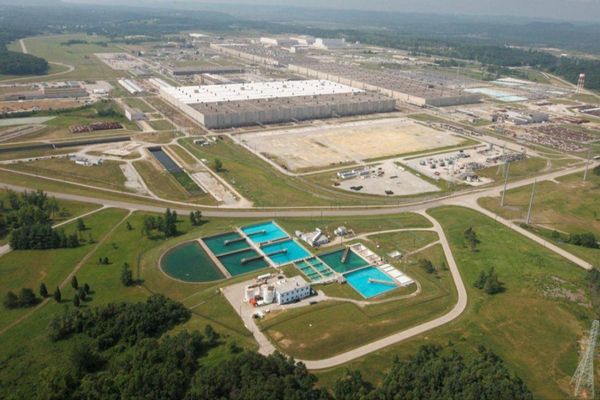
SCN: What prompted you to establish IHSE USA?
Manny Patel: When I started IHSE USA in 2009, it was a simple handshake agreement where my company and IHSE would each contribute 50% to the startup cost. IHSE Germany was already doing some business in the U.S. but wanted to expand name recognition. I took the role of president and CEO of the newly formed IHSE USA. I saw a specific niche opening for digital KVM systems used in broadcasting and production environments. Since that time, we’ve sold thousands of systems to TV broadcasters, video production studios, and news networks, and have partnered with some of largest manufactures in the industry for their backroom software and hardware development teams.

SCN: Your KVM solutions are in use in several vertical markets. Currently, what are some of the top markets for IHSE USA?
MP: Many renowned institutions across vertical sectors, including broadcast, post production, banking, healthcare, maritime, air traffic control, and government rely on our high-class KVM solutions. Practically every industry uses computers, and in many cases their employees need to gain access to more than one—whether this is in the office or from remote locations across the world.
SCN: What kind of installation would benefit most from a KVM matrix switch?
MP: Mainly, KVM technology will continue to play a pivotal role in both commercial and government control room applications. In our case, we see high-end applications where 16-400 computers would be connected to the switch and accessible to 20 or more users. Lately, we are seeing a large demand for remote access using KVM-over-IP systems integrated with our traditional KVM baseband systems.
SCN: Are you seeing more interest in KVM or KVM-over-IP solutions?
MP: Although our baseband KVM systems have their own advantages for mission-critical projects, there is a shift to KVM-over-IP for Pro AV and broadcast users. Remote workers present a unique challenge to protect confidential company data, because remote work environments usually do not have the same safeguards in place that would be found in an office environment. While there may be different levels of security in an office environment, it becomes a much higher risk to the company to prevent security breaches once a computer leaves the office security perimeter.
SCN: How do you keep KVM-over-IP systems secure?
MP: Currently, businesses and government organizations seek to prevent network cyberattacks by physically isolating the IP networks via private or secure network protocols. Mission-critical control systems and those that carry commercially-sensitive data must be secure from external access by unauthorized agents. KVM-over-IP allows low latency solutions for remote access, but still requires a professional on-staff network manager for service and troubleshooting in environments where 24/7 operations is critical.
SCN: What is a KVM display management system and how does it differ from a typical KVM system?
MP: Like the legacy KVM, the KVM display management system provides the bridge that allows users to control and switch between multiple PCs or servers via a single keyboard, mouse, plus utilizing multiple video monitors and sharing remote video sources from the local desktop. The main difference being a DMS can be configured to support multiple monitors, multiviewers, or wall processors as well as supporting configurable EDID, adding multiple layers of security, and managing resolution compatibility to maintain image consistency across different types of display connector types.
SCN: What are the advantages of KVM extenders?
MP: KVM extenders enable you to remove the critical data from computers away from the operator’s environment. For this purpose, computers are usually moved out of studios, editing rooms, and control centers and housed in access-protected and air-conditioned areas. From the equipment room, fiber optics, CATx cables, or IP structures extend the computer signals back to the workplaces. KVM allows users to be even further separated from each other by enabling them to work in other premises, while still getting full access to all the systems they need.
SCN: A lot of companies are now touting web-based control and monitoring solutions—what does IHSE USA offer?
MP: Our latest web-based control software is Tera Web Control (TWC). TWC supplements the normal keyboard-based connection selection methods with a graphical user interface. Users can operate with their own mouse to select and switch individual source connections to their personal workspace or select from a range of predefined I/O configurations.
Lately, we are seeing a large demand for remote access using KVM-over-IP systems integrated with our traditional KVM baseband systems.
The TWC application depicts the arrangement of consoles and monitors as connection layouts. Creating and changing individual layouts is intuitive and can be undertaken without programming knowledge. It is a license-based software module integrated into the matrix architecture that runs via a normal web browser and is specifically developed for controlling and switching Draco tera KVM matrices. All access rights previously assigned in the matrix configuration are carried forward to the TWC, making setup extremely simple while providing optimal access security.
SCN: How can systems contractors better position themselves to profit from products and/or services you have to offer?
MP: Although the industry still identifies with KVM, our focus is to migrate our SIs to a more inclusive term of DMS. A DMS switching system is primarily designed to provide a user experience comparable to a direct connection to the target PC and, at the same time, offering connectivity to a large variety of different PCs providing control commands and giving access to many different software applications running on different PCs, servers, or in the cloud. DMS will also enable status information about which user stations or operator desks are connected to which target application.
Technical staff must be trained to set up the system and configure users, the switch, and connected applications. The key differentiator of a DMS is its end-to-end, purpose-built design. This includes the switch enabling the handling of all signals with a single unit. At the edge of the system, the extender endpoints process system information, multiplex and encode/decode payload information, and transmit/receive all information over a single line connection to and from the DMS matrix switch.
[Viewpoint: Making AI Connections]
SCN: What’s next for KVM for the Pro AV industry?
MP: Today’s system designers for AV signal management are going through a transition to eliminate the traditional stove-piped communications concept to a more open-source infrastructure. The ability to obtain, gather, process, and distribute information effectively is key for many system designers using KVM as DMSs. With the adoption of 4K (and the potential of 8K) in the broadcast and post-production industries, emerging features such as high dynamic range (HDR) and high bit rate resolutions are also pushing the boundaries for DMS infrastructure and distribution equipment.







